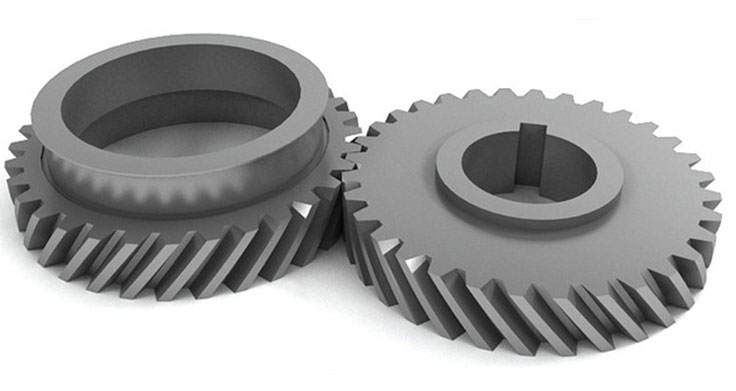The science of helical gears encompasses various aspects of their design, analysis, and manufacturing, which are critical for ensuring their proper functionality and performance. Let’s explore each of these aspects:

1. Design of Helical Gears:
- Helix Angle and Lead: The helix angle and lead determine the helical shape of the gear teeth and affect the gear’s load-carrying capacity, efficiency, and smoothness of operation.
- Gear Ratio and Number of Teeth: Selecting the appropriate gear ratio and the number of teeth is essential to achieve the desired speed and torque transmission in the gear system.
- Pressure Angle: The pressure angle determines the angle at which the gear teeth contact each other and affects the gear’s strength and load distribution.
- Module or Diametral Pitch: The module (for metric systems) or diametral pitch (for the imperial system) defines the size and spacing of the gear teeth and influences gear performance.
- Center Distance and Shaft Alignment: Proper alignment of the gears’ shafts and the correct center distance between gears ensure smooth and efficient power transmission.
- Material Selection: Choosing the right gear material based on the application’s load, speed, and operating conditions is crucial for gear durability and reliability.
2. Analysis of Helical Gears:
- Stress Analysis: Analyzing the stresses and deformation in gear teeth under various operating loads helps ensure that the gears can handle the intended application’s forces without failure.
- Load Distribution: Evaluating how the load is distributed across multiple teeth in helical gears ensures even load sharing and optimal gear performance.
- Efficiency and Power Loss: Analyzing gear efficiency and power loss during meshing helps assess gear system efficiency and energy consumption.
- Vibrational Analysis: Studying gear vibrations and resonance frequencies is essential to avoid harmful vibrations and ensure smooth gear operation.
3. Manufacturing of Helical Gears:
- Gear Cutting Techniques: Helical gears are typically manufactured using gear cutting processes such as hobbing, shaping, milling, or broaching. Each method has its advantages and is chosen based on the production volume, gear specifications, and required accuracy.
- Heat Treatment: After the gears are cut, they often undergo heat treatment processes, such as carburizing, quenching, or induction hardening, to improve their hardness and durability.
- Surface Finishing: Grinding, honing, or lapping may be performed to achieve a smooth surface finish and improve gear performance.
- Quality Control: Ensuring the quality and precision of helical gears involves various inspection methods, including gear analyzers, coordinate measuring machines (CMM), and other specialized gear inspection equipment.
- Lubrication: Proper lubrication is critical for the smooth operation and longevity of helical gears. The choice of lubricant and lubrication system depends on the application’s operating conditions.
The science of helical gears involves a deep understanding of gear theory, advanced computer-aided design (CAD) and analysis tools, and expertise in gear manufacturing processes. Engineers and manufacturers must take into account various factors and perform thorough analysis and testing to design and produce high-quality helical gears that meet the specific requirements of each application.
